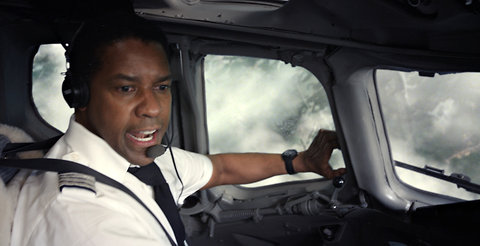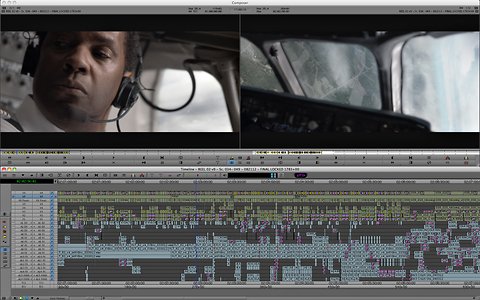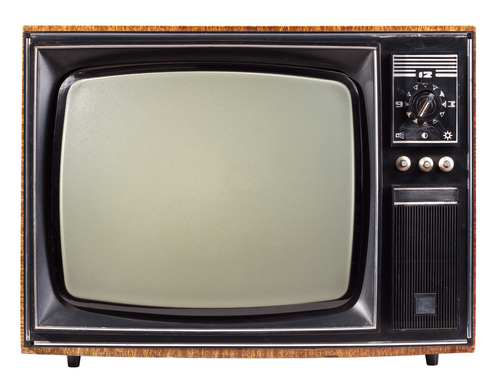|
Below the Line: Editing the Crash in Flight
Posted on: 12/09/12
In some ways, film editors’ job is to make their work invisible. They hope that audiences don’t notice the editing and see only that a clear path has been drawn to the heart of the film’s story. An editor who is in tune with a director’s vision is crucial, and it helps when the two have a long-established collaboration. Such is the case with Jeremiah O’Driscoll, the editor of “Flight,” and that film’s director, Robert Zemeckis, who have worked together for 21 years, starting when Mr. O’Driscoll served as an apprentice to Arthur Schmidt, then moved into the editor position on “The Polar Express” in 2004. Along the way, he has developed a shorthand with Mr. Zemeckis. “My training in the craft of editing was growing up in his cutting room,” Mr. O’Driscoll said, speaking by phone from Los Angeles. “I don’t always know 100 percent what he wants, but I pretty much can gather, from just looking at his dailies, what his intention is in a scene.” Much of “Flight,” which stars Denzel Washington as the alcoholic pilot Whip Whitaker, is a series of dialogue-laden scenes and those edits often followed the script. But Mr. O’Driscoll said that Mr. Zemeckis’s films usually include one major sequence in which the dramatic tension is built through editing. Here, that sequence involves a breathtaking plane crash that occurs early in the film: “On page, the dialogue is down and the basic action is down,” Mr. O’Driscoll said. “But then you get to a gray area where what we’ve shot is not exactly what’s in the script.” The scene’s intensity is amplified by the fact that much of it takes place inside the plane, both in the cockpit and the cabin, with only a few shots showing the exterior. It creates a claustrophobic feel and helps the audience relate intimately to the characters.
“There was a lot of footage, but it was relatively well-defined,” he said. “What I didn’t know and what was really intimidating to me was all of the technical business of it.” Mr. O’Driscoll had help from Mr. Zemeckis, who has experience as a pilot. “So he did some hand-holding to say ‘This is where this dial goes and this is where this alarm would go off.’” Mr. O’Driscoll also applied some broader editing principles. “Generally, when you’re putting a scene together, you always want some amount of new information,” he said. “I generally don’t make a cut without it being motivated.” But sometimes he used cuts as a kind of punctuation, like a medium shot of Whip’s character that punches into a close-up. “Denzel was perfect in both takes, but cutting them together somehow just gave us this jolt,” he said. Mr. O’Driscoll also created a sense of disarray with the edit itself: he made “bad cuts” intentionally. “You have to put together the scene so that it works technically,” he said. “But then once it’s all together, you have to go through and create a little bit of chaos with it. Sometimes you don’t want every camera pan to land. Sometimes you cut to Denzel when he’s in the middle of a sentence. I’m trying to keep everything in this relentless, chaotic pace.” Mr. O’Driscoll drew from his own experience in assembling the edit as well. “Many of us in L.A. have probably seen a crash happen on the freeway,” he said. “The scene should happen like that. Where you think, I don’t know if I want to be seeing this, or did I just see that? But you have that emotional impact of it.” Finally, Mr. O’Driscoll let Mr. Washington be his guide. “The performances tell you how to edit,” he said, adding later: “A lot of times, editing a film is a process of removing yourself from it. You allow Denzel to tell his story.” COMMENTS
Be the first to post a comment! Post A Comment:

|
.gif)





.jpg)

